11 Lakes With the Bluest Water in the World
A welcome case of the blues.
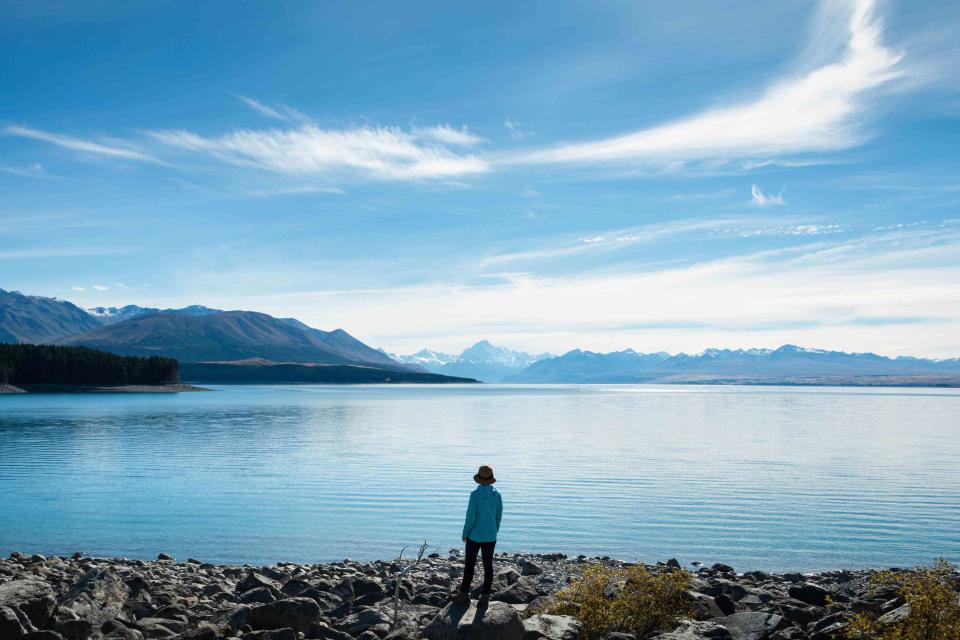
Janice Chen/Getty Images
Few landscapes foster calm like clear, cerulean waters, and you don’t have to head to the coast to enjoy Mother Nature’s bright blue eye candy.
Lakes around the world shimmer in all shades of blue, from turquoise alpine fresh water to jewel-hued waters that double as mirrors for the forests that flank them. Many of the world’s bluest lakes can thank minimal amounts of algae and other substances for their eye-popping colors, according to LakeScientist.com.
Whether you’re admiring the colors from the shore or jumping in head first, here are 11 of the world’s bluest lakes to add to your travel list.
Lake Pukaki, New Zealand
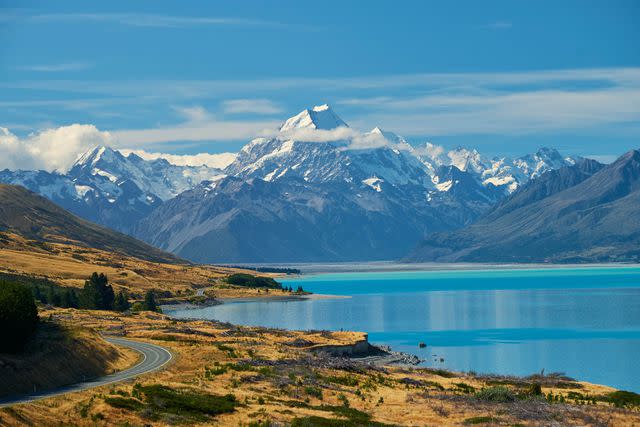
Westend61/Getty Images
Towering mountains, alpine valleys, and turquoise water so perfect it looks dyed — these are among the many draws of Lake Pukaki. According to the Christchurch, New Zealand, tourism board, Lake Pukaki brims with silt particles, known as glacial flour, which remain suspended in the water. This silt absorbs purple and indigo wavelengths, and the water absorbs red, orange, and yellow, leaving the dazzling blue-green water that allures hikers, bikers, and lakeside strollers.
Lake Malawi, Malawi
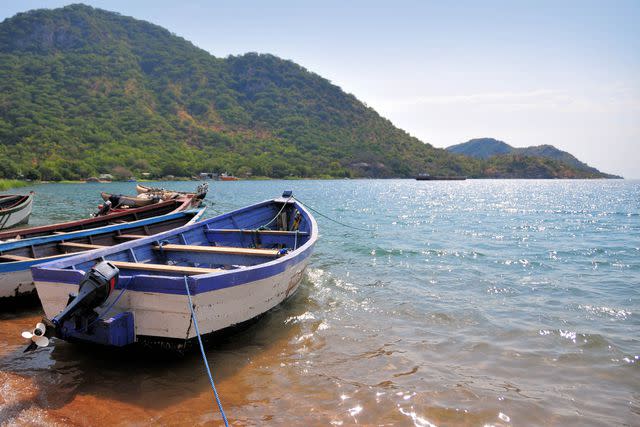
mtcurado/Getty Images
Lake Malawi is the one of world’s most biodiverse lakes, with more than 1,000 known fish species — plus many scientists have yet to discover. These animals, largely cichlids, enjoy pristine cerulean surroundings. Lake Malawi is meromictic (its water layers don’t mix), which means the sediment stays on the bottom while the crystal-clear top shines all tints of blue. Tiny islands, like the private Mumbo Island, dot the water body, promising tropical vibes with on-site snorkeling and scuba diving.
Crater Lake, Oregon
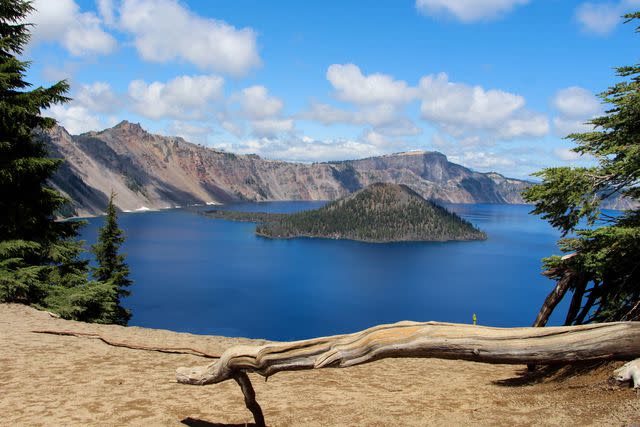
Sujata Jana/Eye Em/Getty Images
America’s deepest lake is perhaps its most enchanting. Crater Lake, with a depth of 1,943 feet, is so impressive, the government built Oregon’s only national park around it. This body of water, carved by a volcanic eruption, sits flanked by the snow-flecked Cascade Mountain range. A deep, blue shade is its signature attraction; the waters come from snow and rain, as it has no inlets from other water bodies. It’s among the world’s cleanest lakes, with designated spots for swimming — if you’re brave enough to endure the chilly temperatures (it’s 60 degrees Fahrenheit at its warmest come summer).
Lake Baikal, Russia
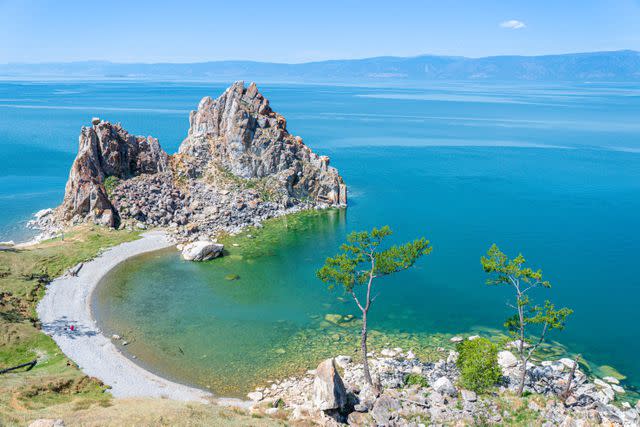
Kartazon Dream/Getty Images
If you think Crater Lake’s deep, turn your attention to Lake Baikal in Russia, which reaches depths of more than 5,300 feet. This wild and wondrous water body is packed with superlatives: It’s nearly 400 miles long, with 27 islands and 1,500 animal species, including the nerpa, the world’s only freshwater seal, according to Smithsonian Magazine. On top of of that, Lake Baikal — the planet’s most voluminous freshwater lake — provides a lesson in the varying hues of blue. It changes from navy to cobalt to teal depending on the season, sky, and blooms in the water.
Lake Tahoe, California
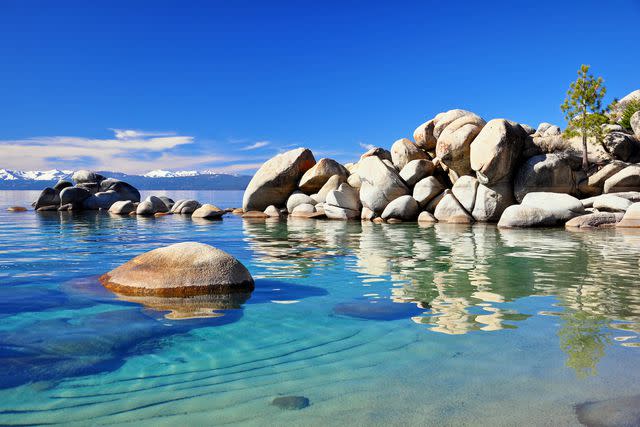
stevedunleavy.com/Getty Images
Many lakes earn their cyan shades from the clarity of the water; in Lake Tahoe, the intense jewel tone comes from the water’s algae, according to research from the UC Davis Tahoe Environmental Research Center. Sediment dictates the water’s clarity, while the concentration of algae controls the color. Now, the cobalt lake is also cleaner than it’s been in decades, thanks to a massive effort by nonprofit Clean Up the Lake, whose divers recently completed a lake cleanup that removed nearly 25,000 pounds of litter.
Lake McKenzie, Australia
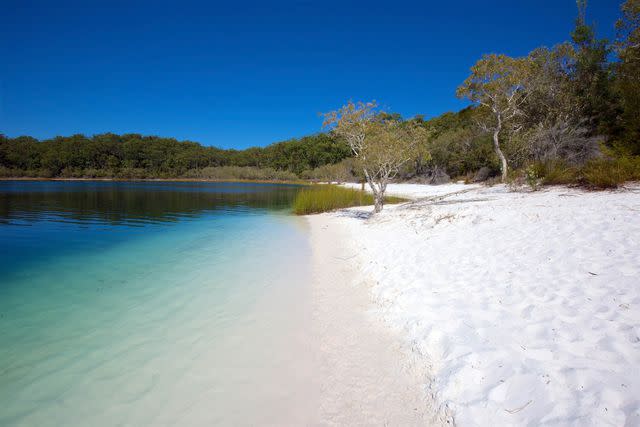
Paul Atkinson/Getty Images
Queensland’s Lake McKenzie, located in Great Sandy National Park, is a classic for summertime swims, but it’s also home to a host of superlatives, starting with its pure silica sand. The paper-white sand makes the lake’s azure tone even more distinct. The lake, no more than 20 feet deep, is perfect for snorkeling, paddling, and swimming — particularly given the water hovers around 73 degrees Fahrenheit.
Torch Lake, Michigan
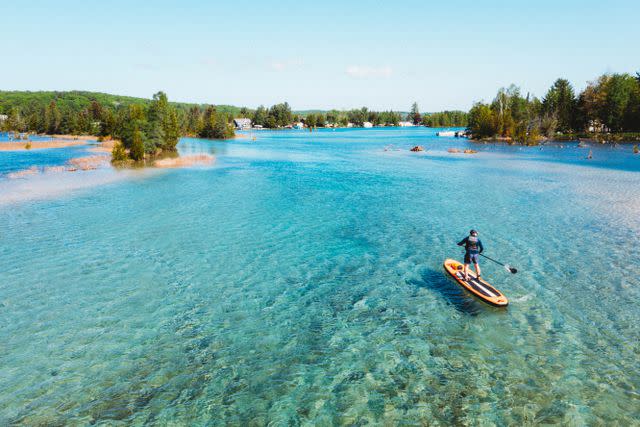
Pure Michigan
Michigan's longest inland lake is also one of its most attractive. Travelers flock to the 19-mile-long Torch Lake for its renowned jewel-toned water and lounge-ready sandbars. The lake, roughly 45 minutes from Traverse City, is separated from Lake Michigan by a quarter-mile-wide sliver of land. It’s a go-to for boaters, sunbathers, and beachcombers; it’s also an ideal getaway for houseboat trips.
Moraine Lake, Canada
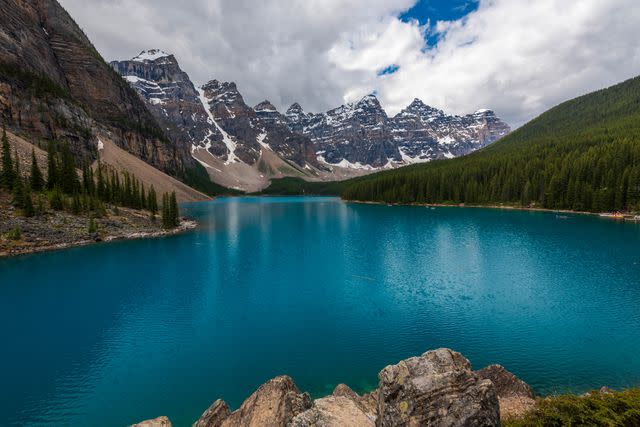
Martin Klima/Eye Em/Getty Images
Bookended by striated peaks and emerald pines, Moraine Lake is already one of Canada’s most breathtaking bodies of water. Add the mirror-still turquoise water, and this Banff National Park escape is almost too good to be true. June to October is the best time to visit, as the lake, at 6,183 feet high, remains frozen over the rest of the year, according to The Banff Blog. You can access this beloved water body via a park-and-ride shuttle, private guide, hike, or bike.
Gokyo Lakes, Nepal
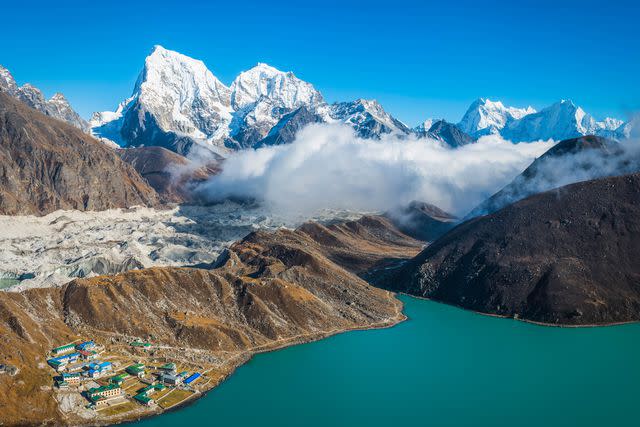
fotoVoyager/Getty Images
Peaks aren’t the only jaw-dropping wonder in the Everest region. Gokyo Lakes, a series of six emerald water bodies, lie beneath the sawtooth summits of the Himalayas, creating a high-elevation scene that overwhelms with awe. The lakes, situated in Nepal’s Sagarmatha National Park, await at an elevation between 15,400 to 16,400 feet. It’s the world’s highest freshwater lake system, reachable via trek or flight.
Lake Bled, Slovenia
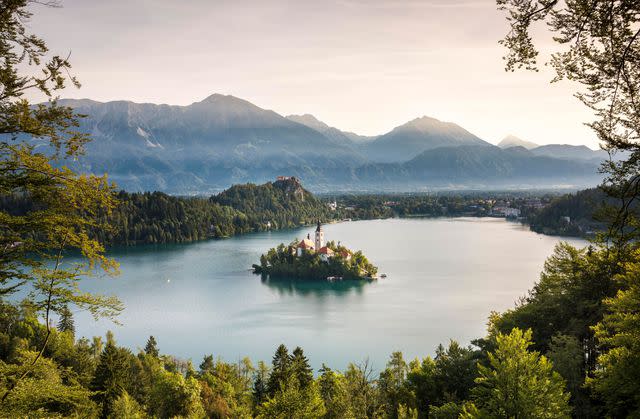
imageBROKER/Marco Bittel/Getty Images
Lake Bled is Slovenia’s most popular tourist attraction — and for good reason. The deep, blue water surrounding Bled Island, and its signature Church of the Mother of God, make the scene look straight out a fairy tale. Local legend says fairies built this enchanting lake, and while science dates it back to the Ice Age, it’s hard to dispute the water’s magic. Beyond the color and stillness, the lake delights with its warm summer temperatures — up to nearly 79 degrees Fahrenheit, according to Trafalgar. Slovenians banned motorboats here, which means the lake provides another hard-to-find delight: quiet.
Lake Pehoé, Chile
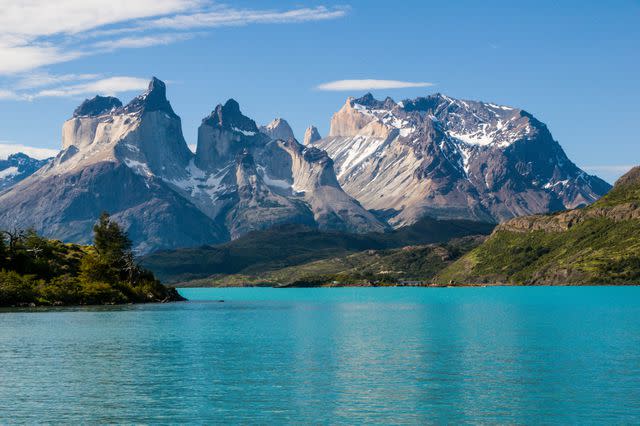
Westend61/Getty Images
From serrated mountaintops to deep fjords to vast glaciers, Patagonia doesn’t skimp when it comes to beautiful landscapes — and Lake Pehoé in the famed Torres del Paine National Park is no different. This sapphire stretch of fresh water provides a mirror for the spiky Cuernos del Paine peaks soaring above it. In addition to its pristine glacial waters, the lake is a great spot to watch for guanaco (a relative of the llama) and, if you’re exceptionally lucky, Patagonia’s elusive puma.
For more Travel & Leisure news, make sure to sign up for our newsletter!
Read the original article on Travel & Leisure.

